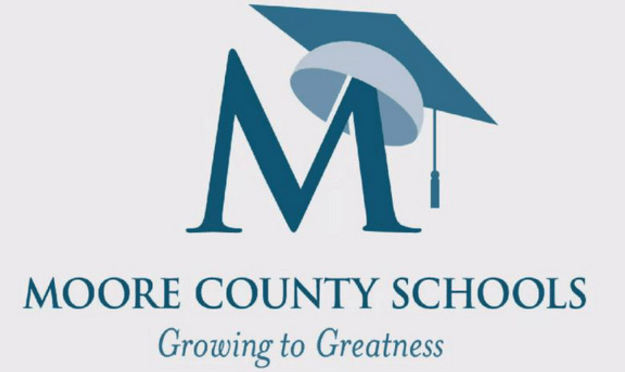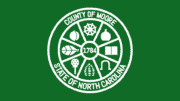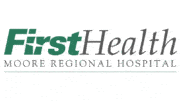- The district’s graduation rate increased to 91 percent; 3.2 percent higher than last year and 4.5 percent higher than the state average, which at 86.5 percent is a record high for the state for the 12th consecutive year.
- Students earned 1,310 college credits while still in high school.
- CTE credentials earned in 2016-2017 totaled 801 as compared to 475 earned in 2015-2016.
- Ten schools earned a “B” grade, three more than last year.
- All 2016-2017 EOG and EOC scores were above the state average.
September 8, 2017 – Moore County Schools continues to make gains on most measures of student learning, according to school accountability data released on September 7, 2017, by the North Carolina Department of Public Instruction (NCDPI) as part of its READY accountability initiative.
The 2016-2017 school year was the fifth year of the state’s READY accountability initiative, which is based on standards set on grade level proficiency and career and college readiness, and the fourth year for which public and charter schools receive a letter grade based on a school’s achievement score (80 percent) and students’ academic growth over one year (20 percent).
Overall, of the 20 schools within Moore County Schools that are assessed, 10 received a B grade, up three from 2015-2016 and the highest number since the initiation of the school performance grade measurement. Seven schools received a C grade, three less than 2015-2016. Three schools received a D grade, the same number as 2015-2016. No school received a F grade.
“While there remains more to learning than just test scores and other accountability measures, I am very happy for our students, teachers and principals. The continued improvement in our state accountability outcomes validates everyone’s hard work and attention to detail,” said Moore County Schools Superintendent Bob Grimesey. “In just four years, we have nearly doubled the number of our ‘B’ schools from six to 10, and all three of our high schools are now graded ‘B.’ It remains my privilege to serve with such dedicated teachers and principals who are building a solid foundation for academic success for student across all of our grade levels.”
Schools receiving a B performance grade were: Carthage Elementary, Highfalls Elementary, New Century Middle, North Moore High, Pinecrest High, Pinehurst Elementary, Union Pines High, West End Elementary, West Pine Elementary and West Pine Middle. Schools receiving a C performance grade were: Cameron Elementary, Crain’s Creek Middle, Elise Middle, Sandhills Farm Life, Southern Pines Elementary, Vass-Lakeview Elementary and Westmoore Elementary. Schools receiving a D performance grade were: Aberdeen Elementary, Robbins Elementary and Southern Middle. Schools that moved from C to B between the 2015-16 and 2016-17 terms were: Carthage Elementary, Highfalls Elementary, North Moore High and West End Elementary. One school dropped from B to C from 2015-16 to 2016-17: Sandhills Farm Life.
Southern Pines Primary and Aberdeen Primary are not required to take state accountability tests. Although students at the Community Learning Center at Pinckney are assessed, the state uses a different accountability model for alternative schools, in which Pinckney excelled being designated at “progressing,” the highest mark for alternative schools in North Carolina.
Elementary and middle schools’ performance grades are based on proficiency scores in reading and math in grades 3 through 8, and in science in grades 5 and 8 in what are referred to as end-of-grade (EOG) exams. High school grades are based on results from end-of-course (EOC) exams in English II, Math I and Biology, as well as other performance indicators such as the cohort graduation rate and the percentage of career and technical education graduates who earn a Silver Certificate or higher on the ACT WorkKeys assessment.
Moore County Schools’ four-year high school cohort graduation rate for the class of 2017 was 91.0 percent and continues to remain above the state average of 86.5 percent – a North Carolina record graduation rate for a 12th consecutive year. For student proficiency on the ACT WorkKeys assessment, 78.9 percent of the class of 2017 achieved the Silver level of proficiency, which was the same level as 2016 but a marked increase from 75.9 percent in 2015.
EOG and EOC exams measure proficiency on two scales: grade level proficient (GLP) and college and career readiness (CCR). District-wide results in reading for grades 3 through 8 found that 62.6 percent were grade level proficient, 1.4 percentage points higher than 2015-16, and 5.1 percentage points above the state average of 57.5 percent. For math grades 3 through 8, 55.7 percent demonstrated grade level proficiency, a slight dip of 0.6 percentage points but slightly above the state average of 55.4 percent. Grade level proficiency in science grades 5 and 8 was 75.5 percent, an increase of 1.3 percentage points over 74.2 percent in 2015-16, and above the statewide average of 72.8 percent.
For the high school EOC exams student grade level proficiency in English II increased from 64.4 percent in 2015-16 to 65.6 percent in 2016-17, and Math I increased from 64.3 percent in 2015-16 to 65.3 percent in 2016-17. Grade level proficiency for Biology made a significant increase 53.1 percent in 2015-16 to 71.8 in 2016-17, which is 15.7 percentage points above the state average of 56.1 percent. All 2016-2017 EOG and EOC scores were above the state average.
More information about accountability measurements and school performance grades for districts throughout the state can be found on the North Carolina Department of Public Instruction’s website at www.ncpublicschools.org/accountability/reporting/.















